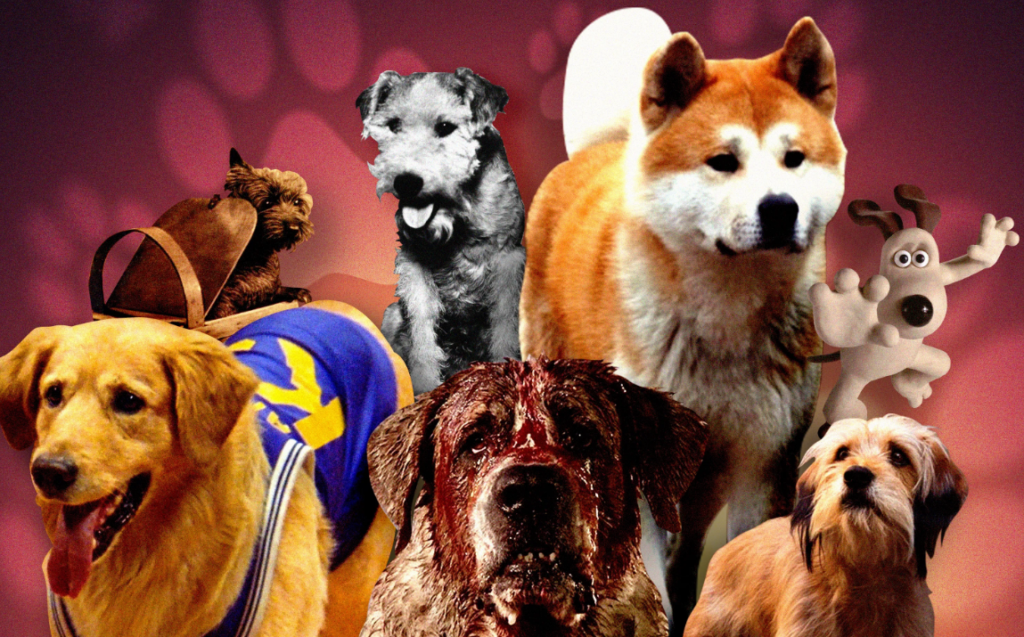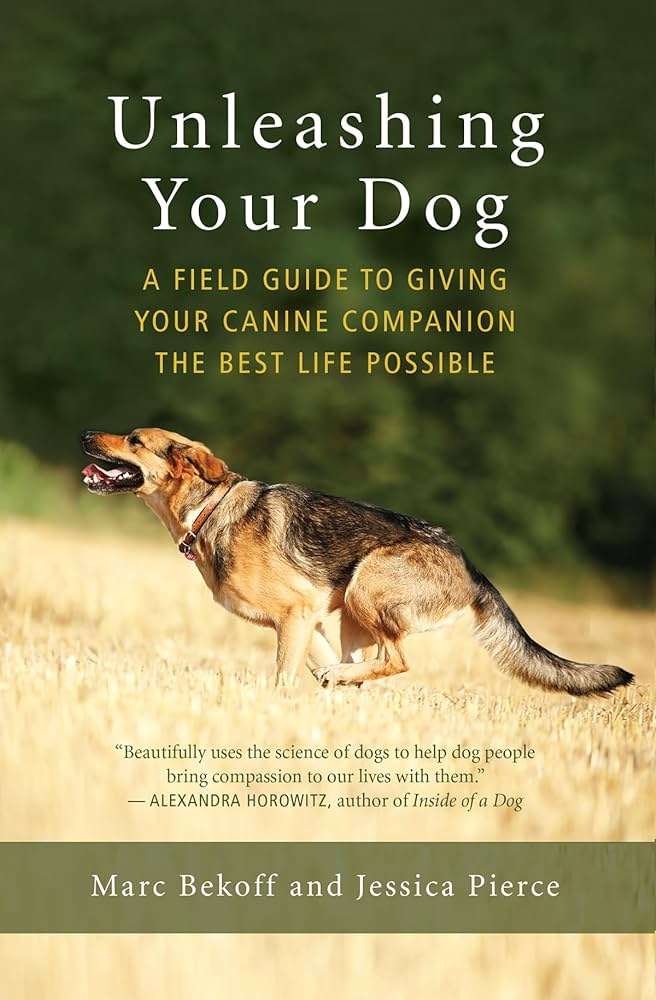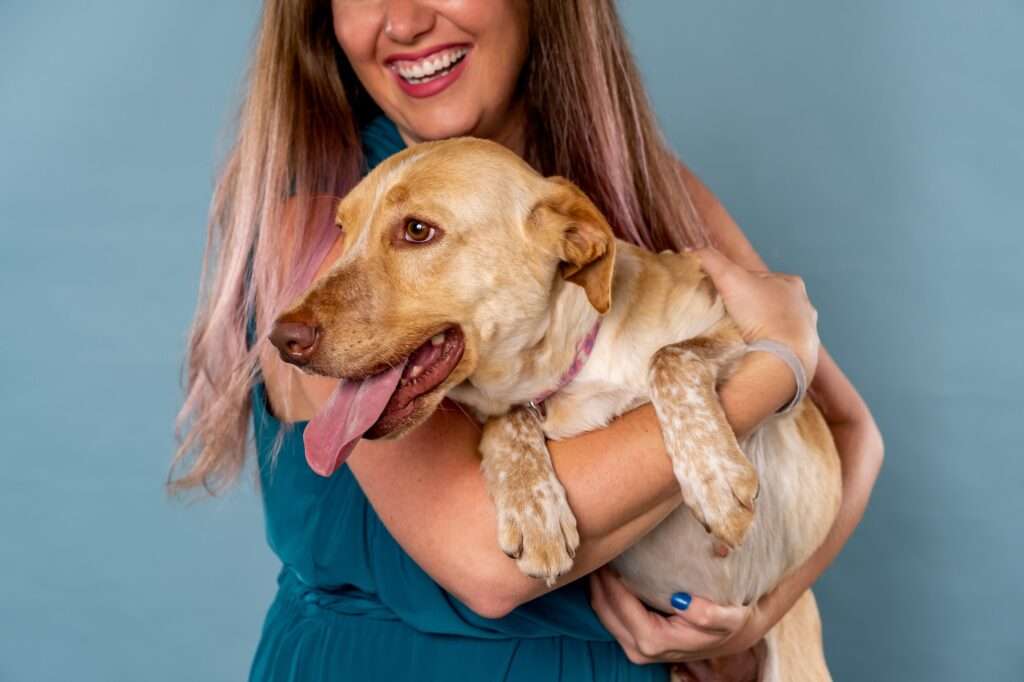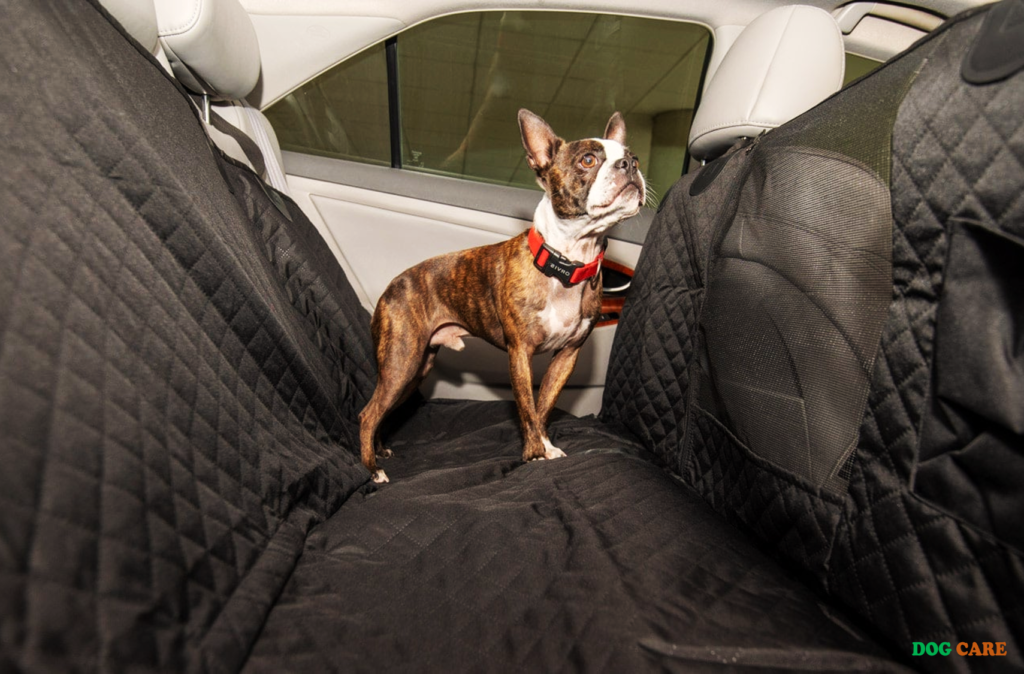How to Take Care of a Dog for Beginners, provide proper food, exercise, grooming, and regular vet check-ups. Owning a dog can be a rewarding and joyful experience, but it also comes with a great deal of responsibility.
Whether you are a first-time dog owner or considering getting a canine companion, it is essential to understand and commit to the care and well-being of your furry friend. Providing proper care involves meeting their nutritional needs, ensuring they get enough exercise, keeping up with regular grooming, and scheduling regular veterinary check-ups.
We will discuss in detail how to take care of a dog for beginners, so you can provide the best possible care for your new pet.

1. Getting Ready For Your New Furry Friend
Welcome to the exciting world of dog ownership! Bringing home a dog can be a joyful and rewarding experience, but it’s important to get prepared before your new furry friend arrives. This section will guide you through the necessary steps to ensure a smooth transition for both you and your dog.
1.1 Researching Different Dog Breeds
Before bringing home a dog, it’s essential to research different dog breeds to find the one that best aligns with your lifestyle and preferences. Each breed has its own unique characteristics, including size, temperament, energy levels, and grooming needs.
Take some time to consider factors such as your living situation, activity level, and the amount of time you can devote to exercising and training a dog. Researching different breeds will help you understand which breed will be the most compatible with your lifestyle.
1.2 Preparing Your Home For A Dog
Your home should be a safe and welcoming place for your new furry friend. Take some time to puppy-proof your living space by removing any hazardous items or objects that could potentially harm your dog. Secure loose wires, chemicals, and fragile objects out of your dog’s reach.
Consider setting up designated spaces for your dog, such as a cozy sleeping area and a designated play area. Ensure that your yard or outdoor space is securely fenced, providing a safe environment for your dog to explore and play. Creating a dog-friendly environment will help your new pet feel secure and comfortable.
1.3 Gathering Necessary Supplies
Before your dog arrives, gather all the necessary supplies to meet their basic needs. This includes food and water bowls, a comfortable bed or crate, collar and leash, and appropriate toys for mental and physical stimulation.
Additionally, you may want to invest in grooming supplies such as brushes, nail clippers, and shampoo, depending on your dog’s breed and coat type. It’s essential to have these supplies ready in advance to ensure a seamless transition for your new furry friend.
2. Welcoming Your New Dog Home
Bringing a new dog home is an exciting and joyful experience. However, it’s important to ensure a smooth transition for your furry friend. This section will guide you through the essential steps to create a safe and welcoming environment for your new dog.
2.1 Introducing Your Dog To Their New Environment
When bringing your new dog home, it’s crucial to introduce them to their new environment gradually. This will help them feel more comfortable and settle in smoothly. Consider these steps:
- Prepare a designated space: Set up a cozy area in your home where your dog can relax and have their own space. This can be a crate, a dog bed, or a specific room.
- Provide familiar scents: Place familiar items in their designated space, such as a blanket or toy from their previous home or the shelter. These scents can provide comfort and familiarity.
- Supervise exploration: Allow your dog to explore their new surroundings slowly and under your supervision. Keep an eye on their behavior and ensure their safety.
- Limit access: Initially, keep doors closed to certain areas in your home to prevent your dog from feeling overwhelmed. Gradually introduce them to new rooms as they get more comfortable.
2.2 Establishing A Routine
Establishing a routine is an essential part of helping your new dog settle in and feel secure. Dogs thrive on consistency, so having a predictable daily schedule can provide them with a sense of stability. Here are some key aspects to consider when establishing a routine:
- Feeding schedule: Set a consistent feeding schedule, offering balanced meals at regular times each day. Consult your veterinarian to determine the appropriate type and quantity of food for your dog’s specific needs.
- Potty breaks: Take your dog outside regularly for potty breaks, especially after meals, playtime, and naps. This will help them learn where and when to do their business, gradually leading to successful potty training.
- Exercise and playtime: Dogs need physical and mental stimulation. Ensure you allocate time each day for exercise, walks, and engaging activities to keep your dog active and happy.
- Bedtime routine: Establish a consistent bedtime routine, allowing your dog to wind down before sleep. This can include cozying up in their designated sleeping area, offering a calming activity like reading or gentle cuddling, and providing a sense of security.
2.3 Bonding With Your Dog
Bonding with your new dog is a crucial part of building a strong and trusting relationship. These simple steps can help foster a deep connection with your furry friend:
- Spend quality time: Dedicate specific periods each day to spend one-on-one time with your dog. This can include cuddling, playing, or simply being present.
- Positive reinforcement: Reward your dog’s good behavior with praise, treats, and gentle petting. Positive reinforcement helps your dog associate good behavior with positive experiences.
- Patience and consistency: Building a bond takes time and effort. Be patient and consistent in your interactions, training, and expectations.
- Training sessions: Engage in regular training sessions to teach your dog basic commands and reinforce good behavior. This will help establish boundaries and enhance the communication between you and your dog.
3. Basic Dog Care
Proper care is essential to ensure the health and happiness of your furry friend. By providing the basic necessities such as nutrition, hygiene, exercise, and mental stimulation, you can help your dog thrive. Let’s explore these aspects in detail:
3.1 Providing Proper Nutrition
Food plays a crucial role in your dog’s overall well-being. It is important to provide a balanced diet that meets their nutritional needs. Here are some guidelines to keep in mind:
- Choose high-quality dog food that is appropriate for your dog’s breed, age, and size
- Include a mix of protein, carbohydrates, and fats to support their energy levels and growth
- Avoid feeding your dog table scraps or food that is harmful to their health, such as chocolate or onions
- Measure the food carefully and feed them on a regular schedule to maintain a healthy weight
- Make sure your dog always has access to fresh, clean water.
3.2 Maintaining Good Hygiene
Keeping your dog clean and grooming them regularly is important for their physical health and overall well-being. Here are a few hygiene practices to follow:
- Regularly brush your dog’s coat to prevent tangles and matting. This also helps to distribute the natural oils in their skin and keep their coat healthy and shiny.
- Trim their nails regularly to prevent overgrowth, which can lead to discomfort or injury.
- Clean their ears regularly to prevent infections. Use a veterinarian-approved ear cleaner and gently wipe the outer part of the ear with a cotton ball.
- Brush their teeth daily using a dog-specific toothbrush and toothpaste to keep their teeth and gums healthy.
- Bathe your dog as needed, using a mild shampoo that is specifically formulated for dogs. Be sure to rinse thoroughly to remove all traces of shampoo.
3.3 Regular Exercise And Mental Stimulation
Exercise and mental stimulation are vital for your dog’s overall health and behavior. Here are some tips to keep them physically and mentally engaged:
- Take your dog for daily walks or engage them in other forms of physical exercise, such as playing fetch or going for a swim.
- Provide them with appropriate toys and puzzles that challenge their mind and keep them occupied.
- Engage in interactive activities with your dog, such as obedience training or agility exercises. This helps to strengthen your bond and keeps their mind sharp.
- Set aside dedicated playtime every day to engage in activities that your dog enjoys.
By providing your furry friend with proper nutrition, good hygiene, and regular exercise and mental stimulation, you are setting them up for a happy and healthy life. Remember, each dog is unique, so consider their individual needs and consult with a veterinarian for personalized care recommendations.
4. Essential Health Care For Dogs
When it comes to being a responsible dog owner, ensuring the health and well-being of your furry friend is of utmost importance. Your dog’s health care needs will play a major role in their overall happiness and longevity. In this section, we will cover the essential health care aspects that every dog owner should be aware of – from finding a vet and scheduling regular check-ups to vaccinations and preventive medications, as well as identifying and treating common health issues.
4.1 Finding A Vet And Scheduling Regular Check-ups
One of the first steps in ensuring your dog’s health is to find a trustworthy and experienced veterinarian. A vet will become your go-to resource for all health-related matters concerning your dog. They will provide invaluable advice, administer vaccinations, conduct routine check-ups, and offer guidance on any specific concerns you may have.
Here’s what you need to do:
- Begin your search by asking for recommendations from friends, family, and fellow dog owners. They can provide insights into their experiences with different vets in your area.
- Consider factors such as proximity to your home, clinic hours, and emergency services when choosing a vet. You want someone who is accessible and reliable.
- Once you have a shortlist, schedule initial consultations with the vets to discuss your dog’s health needs, their expertise, and their approach to veterinary care. This will help you determine if you feel comfortable and confident entrusting your dog’s well-being to them.
4.2 Vaccinations And Preventive Medications
Just like humans, dogs require vaccinations to protect them against various diseases and infections. These vaccinations play a crucial role in preventing potentially life-threatening illnesses. Additionally, preventive medications such as flea and tick control, heartworm prevention, and deworming treatments are essential to keep your dog healthy.
Here are some key points to remember:
- Consult with your veterinarian to create a vaccination schedule tailored to your dog’s specific needs. Different vaccines have different timelines and some may require boosters.
- Adhere to the prescribed schedule and ensure your dog receives all the necessary vaccinations to maintain their immunity.
- In addition to vaccinations, your vet may recommend preventive medications based on your location and your dog’s lifestyle. These medications are vital in protecting your dog from parasites and other common health threats.
4.3 Identifying And Treating Common Health Issues
Dogs, like humans, can experience a range of health issues throughout their lives. As a responsible owner, it is crucial to be able to identify signs of common health problems and take the necessary steps to treat them promptly.
Here are a few examples of common health issues your dog may encounter:
- Ear infections
- Dental problems, such as gum disease or tooth decay
- Skin allergies or infections
- Upset stomach or digestive issues
- Joint pain or arthritis
If you notice any of these symptoms, or if your dog behaves differently or seems unwell, it is important to consult your veterinarian. They will be able to diagnose the issue and recommend the appropriate treatment or medication.
5. Training And Socializing Your Dog
Training and socializing your dog is an essential part of responsible pet ownership. It helps develop a strong bond between you and your furry friend while ensuring they become well-behaved and comfortable in different situations. In this section, we will cover the three main aspects of training and socializing your dog:
5.1 House Training
House training, also known as potty training, is one of the first things you should focus on when bringing a new dog home. This process involves teaching your dog where and when to eliminate waste. Follow these simple tips to make the process smooth and effective:
- Create a consistent routine for meal times, walks, and potty breaks to establish predictable bathroom habits for your dog.
- Designate a specific area in your yard or outside your apartment as the potty spot and consistently take your dog there on-leash to do their business.
- Praise and reward your dog immediately after they eliminate in the designated spot, reinforcing the desired behavior.
- If accidents happen indoors, avoid punishment or scolding. Instead, clean up the mess without drawing attention to it, as dogs do not understand punishment after the fact.
- Consider crate training, which can help dogs develop bladder and bowel control by preventing them from eliminating in their sleeping area.
5.2 Basic Obedience Training
Basic obedience training is crucial for ensuring your dog’s safety and well-being, as well as promoting good behavior. Here are some key points to keep in mind when starting basic obedience training:
- Focus on teaching your dog essential commands like sit, stay, come, and down. These commands lay the foundation for more advanced training later on.
- Use positive reinforcement techniques, such as treats and praise, to reward your dog for obeying commands.
- Keep training sessions short and frequent, as dogs have shorter attention spans and learn best through repetition.
- Be patient and consistent in your training approach, and avoid using harsh punishments or physical force.
- Enroll in a beginner obedience class or seek the help of a professional dog trainer if you need guidance or if your dog shows signs of behavior issues.
5.3 Socializing Your Dog With Humans And Other Animals
Socializing your dog is crucial for their emotional well-being and overall behavior. A well-socialized dog is more confident, friendly, and less likely to develop behavioral problems. Follow these tips to ensure successful socialization:
- Expose your dog to a variety of people, including different age groups and ethnicities, to prevent fear or aggression towards unfamiliar individuals.
- Introduce your dog to other well-behaved dogs in a controlled environment, such as a dog park or obedience class, to help them learn appropriate social interactions.
- Gradually expose your dog to different environments, sights, and sounds to reduce anxiety and fearfulness.
- Always supervise interactions and provide positive reinforcement when your dog behaves calmly and appropriately during socialization sessions.
- Start socializing your dog at a young age but remember that older dogs can also benefit from socialization with patience and gradual exposure.

Frequently Asked Questions Of How To Take Care Of A Dog For Beginners
How Often Should I Walk My Dog For Exercise?
It is recommended to walk your dog at least once or twice a day to keep them physically active and mentally stimulated.
What Should I Feed My Dog For A Balanced Diet?
A balanced diet for your dog should include high-quality dog food that contains a good blend of protein, carbohydrates, fruits, and vegetables.
How Can I Potty Train My Dog Successfully?
Consistency, positive reinforcement, and sticking to a schedule are key factors in successfully potty training your dog.
How Do I Groom My Dog To Keep Them Clean And Healthy?
Regular brushing, bathing as needed, trimming nails, and cleaning ears are essential for maintaining your dog’s cleanliness and overall health.
How Can I Keep My Dog Safe And Prevent Accidents?
Securing your backyard with a fence, using a leash when going for walks, and providing supervision around potentially hazardous areas are effective ways to keep your dog safe from accidents.
Conclusion
Taking care of a dog may seem overwhelming for beginners, but with the right knowledge and guidance, it can be a fulfilling and rewarding experience. Remember to provide a nutritious diet, regular exercise, grooming, and plenty of love and attention.
By creating a safe and nurturing environment for your furry friend, you’ll be building a strong bond and ensuring a happy and healthy life for your dog. So, get ready to embark on this wonderful journey and enjoy the incredible companionship a dog can bring.


